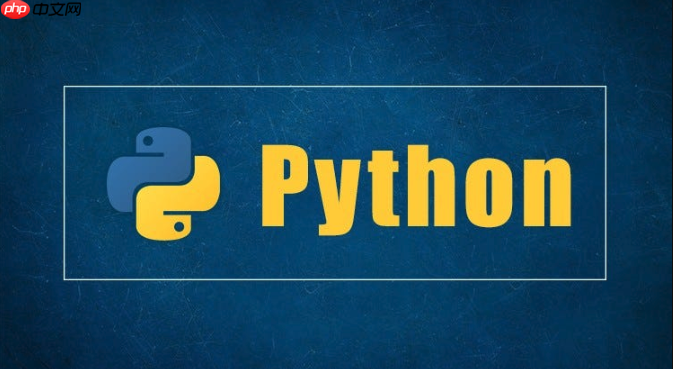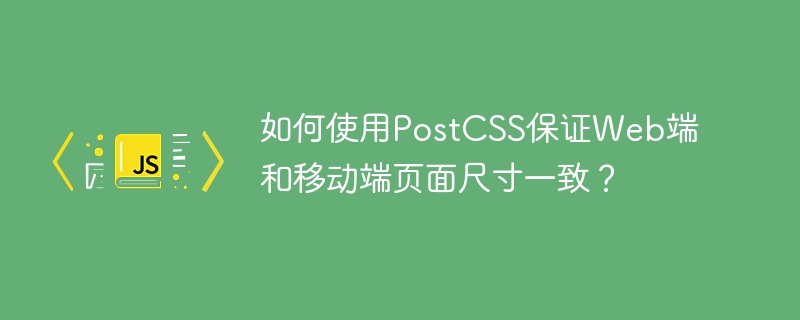使用类型提示和isinstance()可有效校验python函数参数类型,提升代码健壮性与可读性,防止运行时错误。

直接用类型检查确保Python函数接收到预期的数据类型,能减少运行时错误,提升代码健壮性。
Python函数参数类型校验的入门技巧
为什么要在Python函数中进行参数类型检查?
类型检查就像给你的代码加了一层防护网。想象一下,你的函数需要处理数字,但用户却输入了文本。如果没有类型检查,你的程序可能会崩溃,或者返回意想不到的结果。类型检查能帮助你及早发现这些问题,让你的代码更加可靠。而且,它还能提升代码的可读性,让其他开发者更容易理解你的函数期望什么类型的数据。
具体来说,Python作为一种动态类型语言,在运行时才会进行类型检查。这意味着,如果你的函数接收到了错误类型的参数,你可能直到程序运行到那一行代码时才会发现问题。这在大型项目中尤其麻烦,因为你可能需要花费大量时间来调试。
立即学习“Python免费学习笔记(深入)”;
如何在Python 3.x中使用类型提示进行参数类型检查?
Python 3.x引入了类型提示(Type Hints),允许你指定函数参数和返回值的类型。这虽然不是强制性的,但可以被类型检查工具(如MyPy)用来静态地检查你的代码。
例如:
def add(x: int, y: int) -> int: return x + y print(add(1, 2)) # 输出 3 print(add("1", "2")) # 运行时不会报错,但MyPy会警告
这里,
x: int
和
y: int
指定了
x
和
y
应该是整数,
-> int
指定了函数应该返回一个整数。虽然Python解释器本身不会强制执行这些类型提示,但MyPy等工具可以帮助你在运行代码之前发现类型错误。
如果你运行
mypy your_file.py
,MyPy会告诉你
add("1", "2")
这一行存在类型错误。
如何使用
isinstance()
isinstance()
进行运行时类型检查?
除了类型提示,你还可以使用
isinstance()
函数在运行时检查参数的类型。这是一种更直接的方法,可以在函数内部立即验证参数是否符合预期。
def process_data(data): if not isinstance(data, list): raise TypeError("Data must be a list") for item in data: if not isinstance(item, int): raise TypeError("All items in the list must be integers") # 在这里处理数据 print("Data is valid:", data) process_data([1, 2, 3]) # 输出 Data is valid: [1, 2, 3] process_data([1, "2", 3]) # 抛出 TypeError: All items in the list must be integers process_data(123) # 抛出 TypeError: Data must be a list
这段代码首先检查
data
是否是一个列表,然后检查列表中的每个元素是否是整数。如果任何一个检查失败,它会抛出一个
TypeError
异常,阻止函数继续执行。
如何结合类型提示和
isinstance()
isinstance()
来增强类型检查?
你可以将类型提示和
isinstance()
结合起来,既利用类型提示进行静态类型检查,又使用
isinstance()
进行运行时类型检查,从而获得双重保障。
def calculate_average(numbers: list[int]) -> float: if not isinstance(numbers, list): raise TypeError("Input must be a list") if not all(isinstance(x, (int, float)) for x in numbers): raise TypeError("All elements in the list must be numbers") if not numbers: return 0.0 # 避免除以零 return sum(numbers) / len(numbers) print(calculate_average([1, 2, 3, 4, 5])) # 输出 3.0 print(calculate_average([1, 2, "3", 4, 5])) # 抛出 TypeError: All elements in the list must be numbers
在这个例子中,
numbers: list[int]
告诉MyPy
numbers
应该是一个整数列表。同时,
isinstance()
检查确保在运行时
numbers
确实是一个列表,并且列表中的所有元素都是数字(整数或浮点数)。
如何处理更复杂的类型,例如自定义类?
当你的函数需要处理自定义类的实例时,你可以使用
isinstance()
来检查参数是否是该类的实例。
class Dog: def __init__(self, name: str, age: int): self.name = name self.age = age def greet_dog(dog: Dog): if not isinstance(dog, Dog): raise TypeError("Input must be a Dog object") print(f"Woof! My name is {dog.name} and I am {dog.age} years old.") my_dog = Dog("Buddy", 3) greet_dog(my_dog) # 输出 Woof! My name is Buddy and I am 3 years old. greet_dog("Buddy") # 抛出 TypeError: Input must be a Dog object
这里,
greet_dog
函数期望接收一个
Dog
类的实例。
isinstance(dog, Dog)
检查确保传入的参数确实是
Dog
类的一个实例。
如何使用
类型提示来允许函数接受多种类型的参数?
有时候,你可能希望你的函数能够接受多种类型的参数。这时,你可以使用
Union
类型提示来指定函数可以接受的类型。
from typing import Union def process_value(value: Union[int, str]): if isinstance(value, int): print("Processing integer:", value * 2) elif isinstance(value, str): print("Processing string:", value.upper()) else: raise TypeError("Value must be an integer or a string") process_value(10) # 输出 Processing integer: 20 process_value("hello") # 输出 Processing string: HELLO process_value(10.5) # 抛出 TypeError: Value must be an integer or a string
在这个例子中,
value: Union[int, str]
告诉MyPy
value
可以是一个整数或一个字符串。在函数内部,我们使用
isinstance()
来检查
value
的实际类型,并根据类型执行不同的操作。
还有其他更高级的类型检查技巧吗?
当然。你可以使用
typing
模块中的其他类型提示,例如
Optional
、
List
、
Dict
等,来更精确地指定参数的类型。你还可以使用自定义类型别名来简化复杂的类型提示。
此外,你还可以使用第三方库,如
pydantic
或
attrs
,它们提供了更强大的数据验证和序列化功能。这些库可以帮助你定义数据模型,并自动进行类型检查和数据验证。
例如,使用
pydantic
:
from pydantic import BaseModel, ValidationError class User(BaseModel): id: int name: str signup_ts: Optional[datetime] = None friends: List[int] = [] try: user = User(id='123', name='John Doe') except ValidationError as e: print(e) # 输出 # 1 validation error for User # id # value is not a valid integer (type=type_error.integer)
pydantic
会自动验证
id
是否为整数,如果不是,则会抛出
ValidationError
。
总而言之,Python提供了多种方法来进行参数类型检查,从简单的
isinstance()
到更高级的类型提示和第三方库。选择哪种方法取决于你的具体需求和项目的复杂程度。记住,类型检查是提高代码质量和可靠性的重要一步。

















